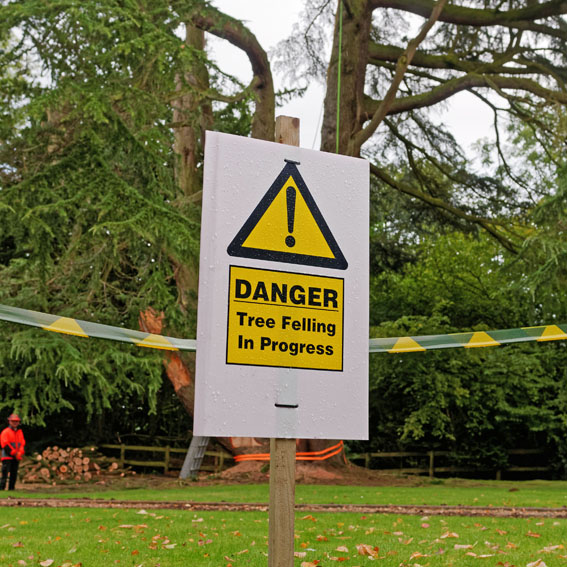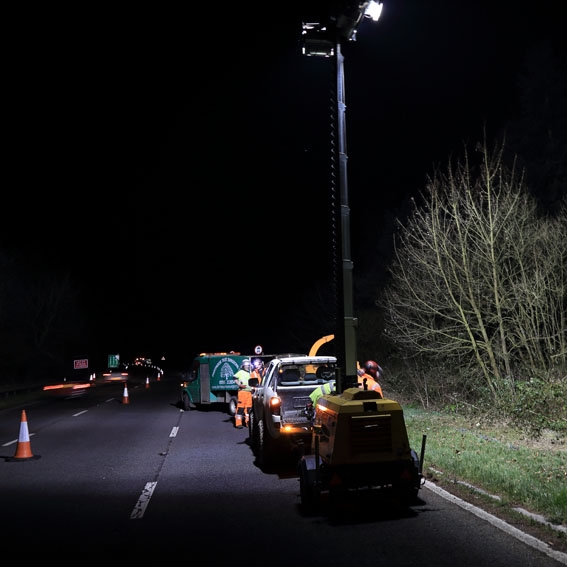
How to Conduct a Risk Assessment
A risk assessment allows you to lay down a plan that will minimise the chances of you, your employees, your client or the general public getting hurt while you conduct your day-to-day tasks. This is part of managing the health and safety of your business—which you are legally mandated to do—especially in a high-risk environment like tree surgery or outdoor work.
Without proper risk assessment, you expose employees and others to the unnecessary risk of potential accidents such as falling from a height, being struck by falling objects or getting electrocuted.
In this guide, we’ll help you conduct a proper risk assessment of your business to foster a safe place for employees and keep your company’s reputation intact.
Step-by-step Guide in Conducting Risk Assessment
Before anything else, know first the difference between a hazard and a risk.
- A hazard is anything that can cause harm to your employees or the people around the workplace (e.g. chemicals, electricity, heavy equipment, machinery etc.).
- A risk, on the other hand, is the chances (high or low) that anyone would be harmed by these hazards. It also details the severity of this harm.
Risk assessment should be conducted before you do any work that poses a threat to anyone’s health. A qualified employee from your organisation should spearhead this endeavour to make sure that you stay legally compliant and follow through with the assessment.
While there are no fixed rules as to how to conduct a risk assessment, it follows these five general points:
1. Identify the hazards
When identifying potential hazards in the workplace, first take into account the activities that you plan to do.
What could go wrong during these activities? Would the location pose a threat to anyone? Are there special requirements needed for your workers to conduct their tasks? Is the equipment to be used well-maintained and fit for intended purpose? Do employees need certification/training to handle equipment?
When you have been in the same workplace for a long time, it’s easy to overlook potential hazards. Here are a few things you can do to help you out:
- Walk around the workplace and closely look at how activities will be conducted, especially those who will work at a height
- Ask your employees to get a ground-zero perspective
- Check manufacturers’ data sheets on equipment and machinery, so you can identify potential hazards
- Look at previous records of any accidents in the workplace
- Consider long-term health repercussions, especially for those who are exposed to high levels of noise or hazardous chemicals

2. Decide who might be harmed and the extent of it
Next, pinpoint who will be harmed based on the hazards you have listed down.
Consider all the groups of people who may be affected—not just those who are directly involved. This includes:
- Your team, including those who conduct aerial tree work and those on the ground.
- Members of the public who will be affected in commercial or residential areas, highways, or roads.
- People who may need special requirements (e.g. migrant workers, people with disabilities, new or expectant mothers, lone workers, etc.).
- People who may not be in the workplace all the time (e.g. contractors and visitors), and may not know your regulations.
- Other businesses that share your workspace and may be affected by your activities.
You need to consider this wide range of individuals, as a lot of people do not understand the risks that come with tree work. Some may be inquisitive and try to walk near or under your work site without realising how much risk they are exposing themselves to.
When you know who might be potentially affected, it will be easier to see the harm an activity may cause them and come up with a plan to mitigate all the possible risks.
To make sure you’re thorough, you should also ask your employees, as they may notice things that are not so obvious to you.
3. Evaluate the risks and how to mitigate them
After identifying the hazards, you need to categorise the risks (i.e. how likely they will occur) and come up with a plan to minimise them.
It should be pointed out that the arboricultural industry is inherently risky and that you’re not expected to eliminate all the risks 100%. What you need to do, however, is make sure that you are well aware of what these are and have an actionable plan to manage them. You are also not expected to anticipate all unforeseen risks.
For every hazard you’ve identified, categorise it according to the likelihood of it happening (some provide a numerical value or low-medium-high rating). Then, assess how much impact it will have if it happens.
If you have a long list of hazards, start addressing the most serious risks first. Then, identify long-term solutions for those with the biggest consequences and those that will most likely cause accidents.
Is it possible to get rid of the hazard? If not, what can you do to control the risks so that any injury is unlikely to happen?
You can do the following:
- Avoid the risk – You can remove the risk altogether by not engaging in hazardous behaviour or preventing access to any of the hazards.
- Control the risk – The most common solution, this can include coming up with less risky options, using protective equipment that’s compliant to UK laws, putting up first aid and other welfare facilities, or organising the workplace in a way that reduces people’s exposure to hazards.
- Finance the risk – This involves accepting the fact that the risk is bound to happen, and diverting resources towards any liabilities when the risk occurs.
- Transfer the risk – Is it possible to have a third-party perform the risky activity or have them cushion the consequences (e.g. insurance, indemnity, etc.)
We advise that you also involve and consult with your workers, so you can ensure that the steps in place will work in actuality.
4. Record your findings
According to UK law, if you have less than five employees, you are not required to write anything down (although it’s highly recommended you do, for the purposes of better ongoing communication with the team).
Put your plan into practice and start recording as soon as it’s implemented. Keep updating your document each time you get results. You can use the HSE’s risk assessment template to keep track of them.
Share your findings to the company. Consider your audience and the language you’ll use to communicate. Make sure you are clear, specific, and detailed, so they will know what went wrong (if any) and how to properly implement the plan.
5. Review your assessment
Workplaces tend to change over time, especially in the arborist industry where activities tend to vary from one site to another.
Update your risk assessment to check for accuracy in the event of situations changing or if situations differ from what you anticipated. In cases of significant changes, consider stopping the activity until you get to overhaul the risk assessment and introduce a new plan to the company.
If there’s a new plan in place, record it and brief everyone involved before implementation.
More Than Just Paperwork
Risk assessment may take a lot of time and resources to do, but it lays a good foundation for your company. Even though you’re already taking steps to keep your employees (and the public) safe, a risk assessment will give you proper data to conclude whether you’ve covered all your bases or if there are things that slipped through the cracks.
